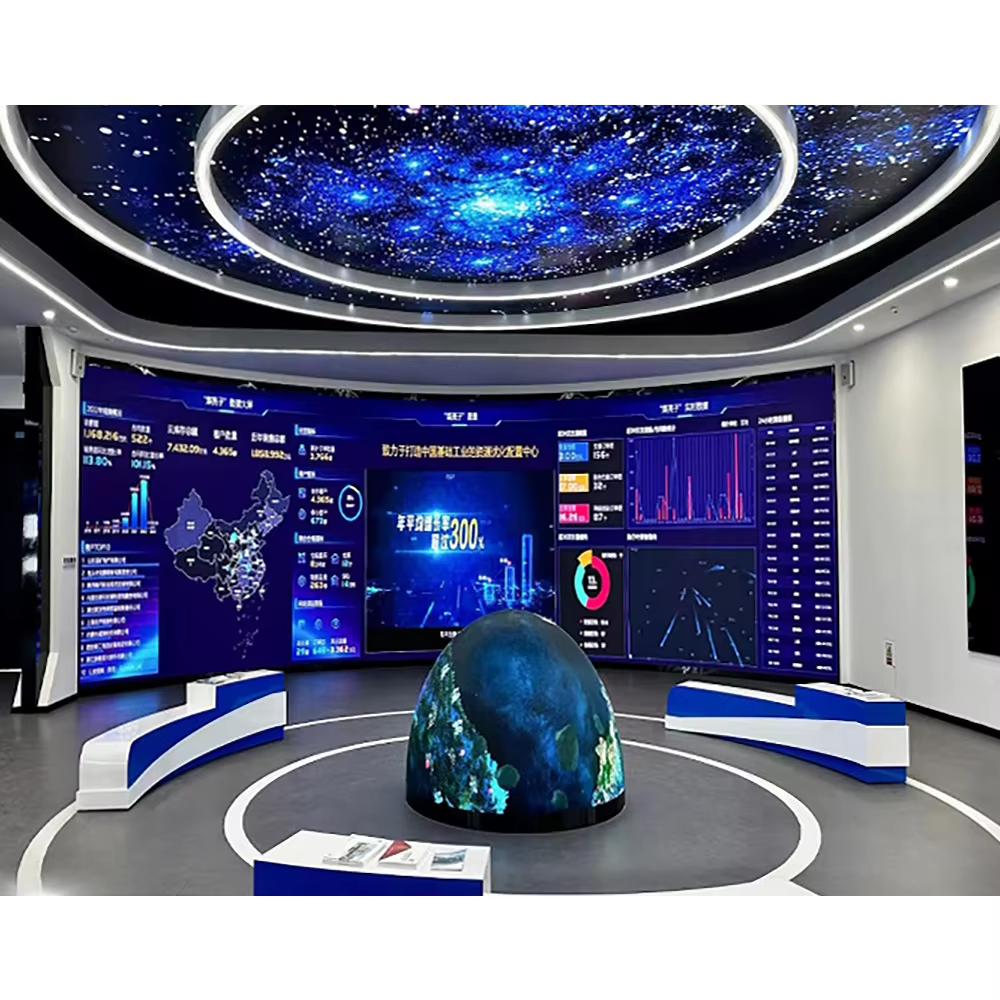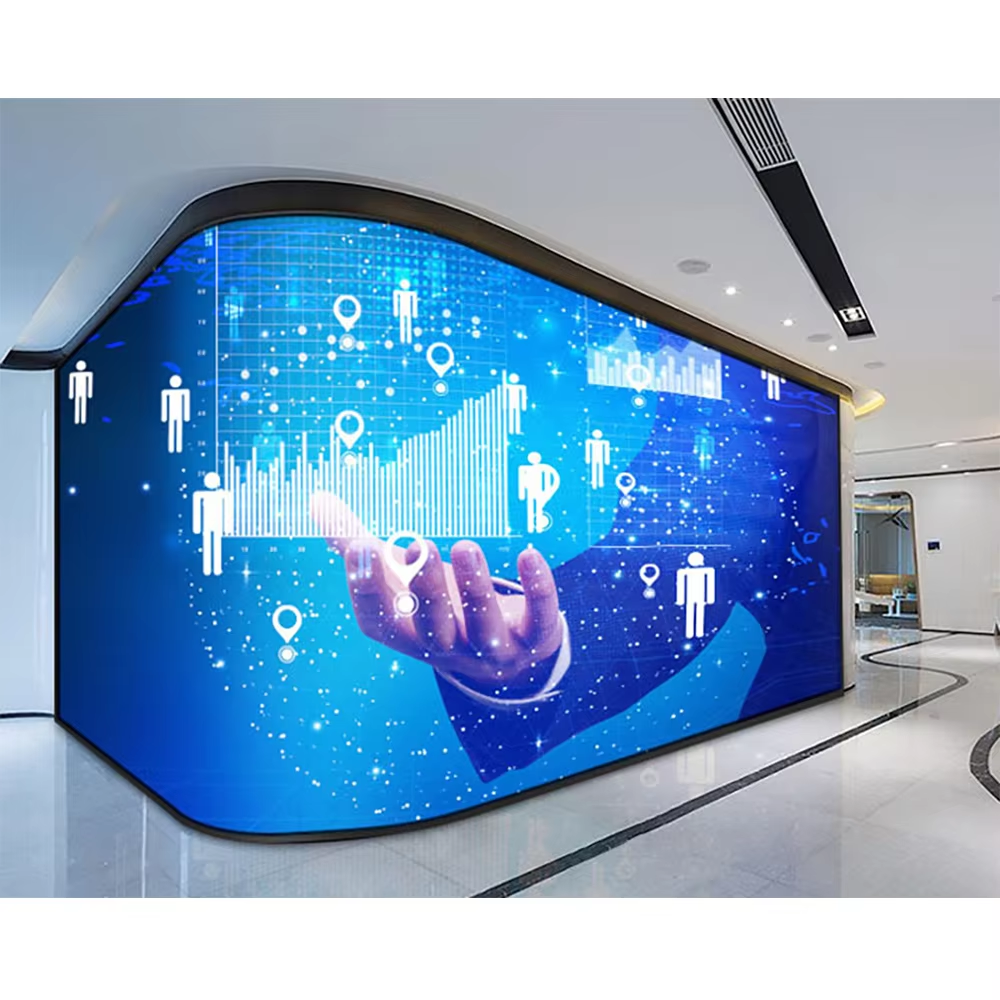Market Growth and Projections for Outdoor LED Screens
Global Demand Surpassing $23 Billion by 2030
Outdoor LED screens are growing fast thanks to more people living in cities and businesses needing better ways to advertise. Research shows the worldwide market could hit over $23 billion by 2030, which represents around an 8% yearly increase. North America, Europe, and parts of Asia are really pushing this growth forward because their cities keep getting denser and people watch ads outdoors differently than before. We see this happening everywhere from Times Square billboards to digital storefront windows in Tokyo. With urban areas expanding constantly and companies looking for eye-catching marketing tools, it's no surprise these regions will continue installing cutting edge LED displays at record rates.
Drivers: Energy Efficiency and Smart City Initiatives
The energy efficiency factor has been a major driver behind why so many people and businesses have switched to LED technology. These lights just eat up way less electricity than old fashioned bulbs do. Cities around the world that want to become smarter places for people to live are putting LED displays everywhere now. They show transit info, weather updates, even local news right on buildings throughout town centers. And governments aren't sitting back either. Many municipalities offer cash rebates or tax breaks when companies install energy efficient lighting systems. Combine all these things together what we see happening is a pretty dramatic shift in how cities light up their spaces. LED screens are becoming standard equipment rather than some fancy extra feature in most urban developments nowadays.
Challenges: Cost Barriers vs. OLED Competition
The market is growing fast, but there are real hurdles standing in the way. Many businesses get turned off by the upfront costs needed to switch to LED tech, especially small operations with tight budgets. Then there's the whole OLED display trend that's making things even trickier for LED manufacturers. OLED screens do look amazing with their deep blacks and vibrant colors, but most companies just can't afford them right now. That price tag keeps them out of reach for many applications. What the industry needs is smarter ways to cut production costs without sacrificing quality. At the same time, marketers should highlight what makes LEDs stand out in the long run - those displays last much longer than OLED counterparts and don't degrade over time like organic materials tend to. When companies understand this value proposition, they'll see LED as the smart investment choice even when faced with competition from newer technologies.
Emerging Applications in Urban Environments
Dynamic Advertising Media and Digital Billboards
LED screens and other dynamic ads are popping up all over cities these days because they really grab attention with their bright colors and eye-catching visuals. The new digital billboards let marketers switch between different messages quickly, so companies can show what works best for whoever happens to be passing by. People actually remember seeing these ads more often than traditional ones too. Some studies have found around a 15% boost in memory retention when folks see digital ads compared to old school posters. That makes sense since we're bombarded with so much information every day, those flashy screens stand out and stick in our minds longer.
Traffic Management and Public Safety Systems
In city environments, LED screens have become pretty much necessary for managing traffic flow and keeping people safe. These big digital boards give residents up to date info about road closures, accidents, and other urgent situations as they happen. When there's a major incident, like a fire or natural disaster, the ability to communicate instantly makes all the difference in controlling crowds and getting people out safely. Police departments report that using LED displays cuts down how long it takes for emergency responders to reach trouble spots. Research shows that cities with good LED networks spread critical information faster than those without them, making these screens a key part of modern urban planning for both traffic control and general public safety measures.
Large-Scale Event Venues and Cultural Experiences
Outdoor LED screens are changing what people experience at big events like concerts, sports games, and festivals. These screens provide all sorts of moving visuals that really pull attendees into the action. Event planners are now going for these flexible LED displays because they can shape them to match different venues. This means bigger impact from the visuals and better matching of the event's creative vision. When culture meets LED tech, it makes a huge difference in how events feel. Screens have become essential for putting on memorable shows packed with visual excitement for everyone watching.
Technological Innovations Reshaping LED Infrastructure
Flexible LED Displays for Architectural Integration
Flexible LED screens are now showing up all over modern buildings and structures. Architects love them because they make it easy to blend tech right into walls and facades without looking out of place. What makes these displays special? Well, they can bend and twist to match any shape or curve on a building's exterior. We've seen some amazing installations where entire building sides become glowing canvases at night. The market for this stuff keeps growing fast as creative minds push boundaries in cityscapes around the world. Pretty soon, we might see entire neighborhoods transformed by these adaptable light displays that change how we experience urban spaces visually.
AI-Driven Content Optimization and Audience Targeting
AI is changing how companies manage content on LED screens by adding real time data analysis features that boost viewer engagement. Retailers and advertisers are using machine learning to look at who's watching their displays and adjust ads accordingly so the messages actually connect with people passing by. Recent market research shows that when content gets personalized through these smart analytics tools, stores see better customer retention and higher sales conversions. The tech isn't just theoretical either many coffee shops and department stores have already implemented this approach with measurable success. For businesses fighting for attention in crowded urban areas, getting the most out of digital signage has become essential for standing out from competitors.
Augmented Reality (AR) in Interactive Public Installations
Augmented Reality is changing the game when it comes to LED screens in public spaces. Cities across the country are starting to install these AR enabled displays not just for showing information but also for fun stuff that gets people interacting. Take Times Square or similar spots where folks can point their phones at certain areas and see virtual content overlaid right there. The numbers tell an interesting story too many studies show people who experience AR installations tend to post about them online much more than regular static displays. That word of mouth effect helps promote whatever event or brand is featured without spending extra money on ads. We're seeing something pretty cool happening here basically, combining cutting edge tech with traditional lighting solutions creates experiences that grab attention and keep people coming back for more.
Sustainability and Urban Adaptation Strategies
Solar-Powered LED Panels Reducing Carbon Footprints
More and more cities are turning to solar powered LED panels as they try to cut down on fossil fuel use. These panels help reduce carbon emissions from street lighting and other public infrastructure across urban areas. When sunlight hits those panels, it powers lights without needing electricity from power plants. Some municipalities have already seen results. One study found that switching to this tech could slash energy bills by around 40 percent over time. The money saved goes back into local budgets while keeping skies clearer too. For mayors and council members weighing budget decisions, this represents both good policy and smart spending at once.
Heat-Resistant Designs for Extreme Weather Conditions
As global warming continues to mess with our weather, manufacturers are starting to focus more on creating LED screens that can handle the heat. Outdoor displays need to keep working properly and maintain good picture quality even when temperatures skyrocket. Standard LED screens tend to struggle under intense heat exposure, often resulting in poor performance or complete system failures, which means higher repair bills down the road. Studies show that screens built with heat resistance features last longer, cutting down on those expensive maintenance calls. For areas where temperatures are climbing steadily and bad weather events are becoming more common, spending money on these upgraded technologies makes sense. Cities like Phoenix or Dubai already see benefits from this approach, getting better value from their digital billboards and information displays through improved durability.
Policy Frameworks Promoting Eco-Friendly Digital Signage
It makes sense for governments to put together some kind of policy framework that rewards businesses for going green with their digital signage, especially when it comes to things like LED displays. When local authorities actually back these kinds of initiatives, they help push companies and city departments toward greener habits, which slowly builds up a real sense of environmental accountability across communities. Look at what's happening in several European nations right now - cities there saw around a quarter more installations of environmentally friendly tech once regulations started favoring sustainability. The bottom line is simple enough: when public officials make eco-conscious options a priority, entire urban areas start transforming into something closer to what we'd call truly sustainable places. Beyond just reducing carbon footprints, these kinds of policies actually stimulate innovation in the tech sector while keeping municipal budgets healthy over time.




